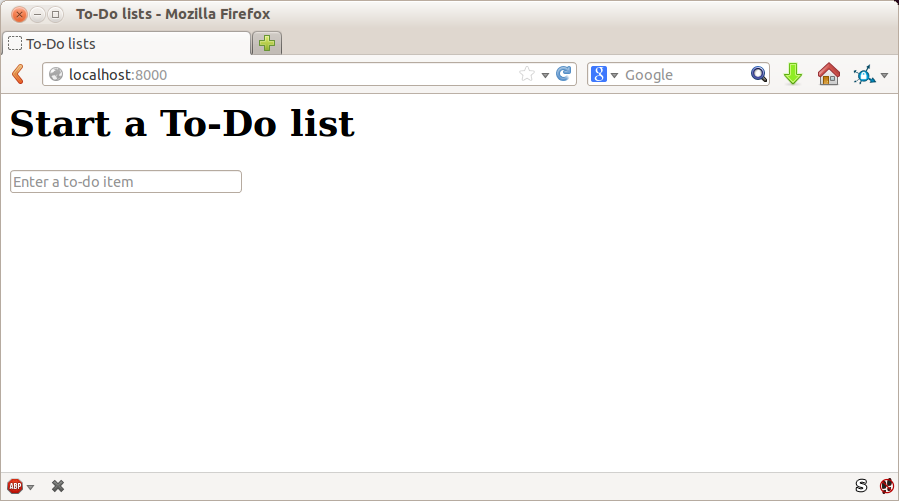Chapter 8. Prettification: Layout and Styling, and What to Test About It
We’re starting to think about releasing the first version of our site, but we’re a bit embarrassed by how ugly it looks at the moment. In this chapter, we’ll cover some of the basics of styling, including integrating an HTML/CSS framework called Bootstrap. We’ll learn how static files work in Django, and what we need to do about testing them.
What to Functionally Test About Layout and Style
Our site is undeniably a bit unattractive at the moment (Figure 8-1).
Note
If you spin up your dev server with manage.py runserver, you
may run into a database error “table lists_item has no column named
list_id”. You need to update your local database to reflect the changes we
made in models.py. Use manage.py migrate. If it gives you any
grief about IntegrityErrors, just
delete1
the database file and try again.
We can’t be adding to Python’s reputation for being ugly, so let’s do a tiny bit of polishing. Here’s a few things we might want:
-
A nice large input field for adding new and existing lists
-
A large, attention-grabbing, centered box to put it in
How do we apply TDD to these things? Most people will tell you you shouldn’t test aesthetics, and they’re right. It’s a bit like testing a constant, in that tests usually wouldn’t add any value.

Figure 8-1. Our home page, looking a little ugly…
But we can test the ...
Get Test-Driven Development with Python, 2nd Edition now with the O’Reilly learning platform.
O’Reilly members experience books, live events, courses curated by job role, and more from O’Reilly and nearly 200 top publishers.

